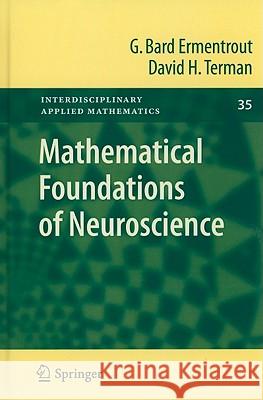Mathematical Foundations of Neuroscience » książka
Mathematical Foundations of Neuroscience
ISBN-13: 9780387877075 / Angielski / Twarda / 2010 / 422 str.
Mathematical Foundations of Neuroscience
ISBN-13: 9780387877075 / Angielski / Twarda / 2010 / 422 str.
(netto: 312,08 VAT: 5%)
Najniższa cena z 30 dni: 325,42 zł
ok. 20 dni roboczych.
Darmowa dostawa!
One cansay that the ?eld ofcomputationalneurosciencestarted with the 1952paper ofHodgkinandHuxleyin whichtheydescribe, throughnonlinearpartialdifferential equations, the genesis of the action potential in the giant axon of the squid. These equations and the methods that arose from this combination of modeling and - periments have since formed the basis for nearly every subsequent model for active cells.TheHodgkin Huxleymodelandahostofsimpli?edequationsthatarederived fromit haveinspiredthedevelopmentofnewandbeautifulmathematics.Dynamical systems and computational methods are now being used to study activity patterns in a variety of neuronal systems. It is becoming increasingly recognized, by both experimentalists and theoreticians, that issues raised in neuroscience and the ma- ematical analysis of neuronal models provide unique interdisciplinary collaborative research and educational opportunities. This book is motivated by a perceived need for an overview of how dynamical systems and computational analysis have been used in understanding the types of models that come out of neuroscience. Our hope is that this will help to stimulate an increasing number of collaborations between mathematicians and other th- reticians, looking for interesting and relevant problems in applied mathematics and dynamical systems, and neuroscientists, looking for new ways to think about the biological mechanisms underlying experimental data. The book arose out of several courses that the authors have taught. One of these is a graduate course in computational neuroscience that has students from the d- ciplines of psychology, mathematics, computer science, physics, and neuroscience."











